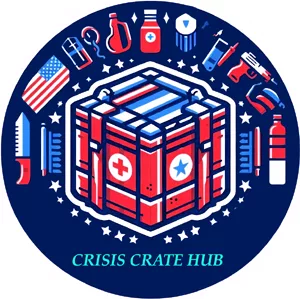Table of Contents

Spotting the warning signs of a tsunami might save lives. The ocean pulling back in an unusually dramatic fashion can be an ominous signal. This often happens moments before a tsunami strikes, leaving the ocean floor exposed. Witnessing this could mean a giant wave is on its way. Historical events teach us this withdrawing ocean is one of nature’s most urgent alerts.
A powerful earthquake near the coast is another indicator. These quakes can trigger tsunamis, so if you feel one, it’s crucial to move to higher ground without delay. Even if the shaking stops, the danger might just be beginning. Understanding this connection between earthquakes and tsunamis helps emphasize the need for quick action.
Listen for a loud roaring sound, akin to a freight train, which could mean a tsunami is close. This kind of noise is rare in regular ocean activity, so if you hear it, head to safety immediately. Recognizing unusual sounds from the sea can be as vital as spotting visual cues.
Beyond natural signs, official tsunami warning systems play a key role. They keep us informed through local radio, TV, and mobile alerts. These systems rely on international networks and advanced technology to predict potential dangers quickly. Trust these alerts and follow instructions immediately to protect yourself and your loved ones.
Preparing Preventatively: Essential Steps Before a Tsunami Strikes
Getting ready for a tsunami isn’t just smart—it’s essential. Craft an emergency plan that includes evacuation routes, and make sure everyone in your household is on board. If you’re unsure where to go, aim for areas at least 100 feet above sea level or a safe distance of at least 2 miles inland. Practicing these routes in advance can make all the difference when under pressure.
Pick out safe locations to head to. Knowing exactly where you’re heading helps keep panic at bay. It’s wise to have both a primary and a backup location in case your initial plan gets disrupted.
Educating yourself and others about tsunami risks in your area can help everyone stay safe. This step isn’t something you do once and forget, though—regular updates and community meetings can keep the information fresh and relevant. Sharing what you know also raises awareness and helps build a prepared community.
Keep tabs on the news and weather reports for any changes in tsunami risks, especially after an earthquake. Modern technology means updates are never far away, so make use of mobile notifications and other real-time alerts to stay informed.
In the end, preparation isn’t just about making plans—it’s about rehearsing them and staying informed. A proactive approach can save lives and reduce chaos when disaster strikes.
What to Carry: Indispensable Emergency Kits for Post-Tsunami Survival
When preparing for the aftermath of a tsunami, having a well-stocked emergency kit is vital. Start by ensuring you have enough water—at least one gallon per person per day for a minimum of three days. This supply will keep you hydrated when local water sources may be compromised.
Non-perishable food is another essential. Pack enough for at least three days, choosing items that are easy to prepare and consume, even without cooking. Energy bars, canned goods, MRE’s (Meals Ready to Eat), Freeze-Dried Food Pouches (they’re generally easy to prepare and light weight when on the go), and dried fruits are great options.
Don’t overlook a first aid kit. Include basic supplies like bandages and antiseptic wipes, as well as any medications you or your family might need. Emergencies can cause injuries, and having a kit on hand can make a big difference. (See article on Well Rounded First-Aid Kits for Extreme Emergencies)
Flashlights and extra batteries should also be in your arsenal, ready to light your way if the power’s out. A whistle is a small but crucial item to include; it can help you signal for help when you can’t call out over the noise.
Protection gear, like gloves, goggles, and masks, will be necessary. They help shield against debris and contaminants, which can be common in flooded environments. Rubber boots are essential for navigating water-filled areas safely, protecting your feet from hidden dangers.
Staying informed is just as crucial as having supplies. Keep a battery-powered or hand-crank radio in your kit or even a solar powered radio to receive updates on rescue efforts and other developments. Chargers for your devices, and perhaps a solar charger, will ensure you stay connected.
Assembling this kit isn’t about planning for the worst but being ready for what comes next. With these necessities on hand, you’ll be better equipped to handle the challenges of a post-tsunami environment.
Distilling Safety Measures: Knowing When the Tsunami Threat Has Passed

After a tsunami, determining when it’s safe requires a cautious approach. Pay close attention to official announcements. Local authorities are your best guide, providing updates through emergency services and media outlets. Until they give the all-clear, it’s best to remain in safe zones.
Just because a tsunami warning is canceled doesn’t mean the danger is over. Authorities assess the situation carefully before announcing that it’s safe. Always wait for an official declaration before returning to affected areas.
Calm conditions might suggest the worst is over, but be wary. Tsunamis can consist of multiple waves, and the threat can extend for hours. Observing the sea from a safe vantage point, without putting yourself at risk, is wise.
Keep an eye out for community alerts or notifications from local emergency management. These updates provide the most reliable guidance on when to return home or travel to coastal areas.
Remember the risk of aftershocks following any initial earthquake. These can trigger additional waves, so stay informed and ready to act if necessary. Remaining informed and vigilant helps ensure safety and aids in a smoother recovery process.
